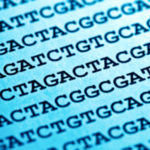
A biosensor for biomarker monitoring and pathogen detection
Molecular Biosensor
In order to develop new diagnostic tools based on DNA/RNA biomarkers, DIAG4ZOO developed its own molecular biosensor technology (mini-array) for biomarker monitoring and pathogen detection.
An optimized technique for a rapid test
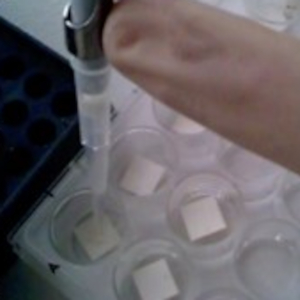
Based on PCR systems, the DIAG4ZOO team developed a new technology that allows multiple detections in one step. When using this biosensor technology, the hybridization time is reduced to 15 minutes, while other methods require a longer hybridization time. Hybridization of the PCR product onto a nylon membrane and revelation of the hybrids with an antibody greatly increases the possibility of pathogen detection. The test is fast, up to 48 reactions can be performed at the same time in only 4 to 5 hours.
An optimized technique for a rapid test
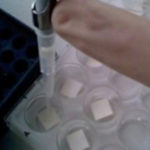
Based on PCR systems, the DIAG4ZOO team developed a new technology that allows multiple detections in one step. When using this biosensor technology, the hybridization time is reduced to 15 minutes, while other methods require a longer hybridization time. Hybridization of the PCR product onto a nylon membrane and revelation of the hybrids with an antibody greatly increases the possibility of pathogen detection. The test is fast, up to 48 reactions can be performed at the same time in only 4 to 5 hours.
Multiple detection for more efficiency
Multiple detections are one of the main advantages of this biosensor. In the case of multiple detections, several sets of specific primers are used and different amplicons from the PCR hybridize with homologous probes traced in predefined positions on the nylon membrane. Interpretation of the results observed on the membrane is easy and can be done by visual inspection. An internal control is added to each reaction to avoid false negatives due to experimental errors.
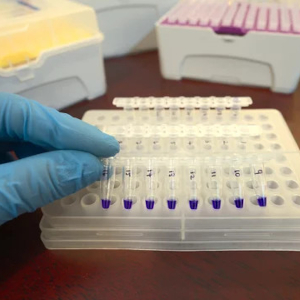
Multiple detection for more efficiency
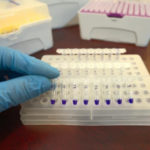
Multiple detections are one of the main advantages of this biosensor. In the case of multiple detections, several sets of specific primers are used and different amplicons from the PCR hybridize with homologous probes traced in predefined positions on the nylon membrane. Interpretation of the results observed on the membrane is easy and can be done by visual inspection. An internal control is added to each reaction to avoid false negatives due to experimental errors.
Pushing the limits
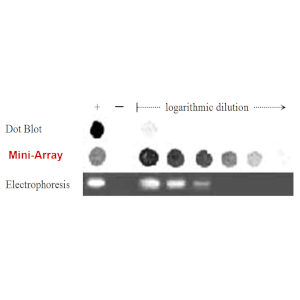
This technology significantly increases the power detection limit of pathogens and is a highly sensitive method contributing to viral prophylaxis as it is :
- 10,000 times more sensitive than the Dot Blot method
- 100 times more sensitive than standard electrophoretic detection of PCR amplified products
It is the ideal solution to detect low level or early infections in order to limit the risks of horizontal and vertical transmissions.
Pushing the limits
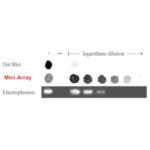
This technology significantly increases the power detection limit of pathogens and is a highly sensitive method contributing to viral prophylaxis as it is :
- 10,000 times more sensitive than the Dot Blot method
- 100 times more sensitive than standard electrophoretic detection of PCR amplified products
It is the ideal solution to detect low level or early infections in order to limit the risks of horizontal and vertical transmissions.
Easy to use, anywhere, anytime
The membranes supplied with the kit are ready to use. The interpretation of the results is easy. The presence or absence of blue spots can be detected visually. Little equipment is required, except for the thermocycler, only basic equipment such as a water bath, a small benchtop centrifuge and a shaker are needed. Therefore, this method can easily be used in farms or hatcheries already using PCR as a diagnostic tool.

Easy to use, anywhere, anytime

The membranes supplied with the kit are ready to use. The interpretation of the results is easy. The presence or absence of blue spots can be detected visually. Little equipment is required, except for the thermocycler, only basic equipment such as a water bath, a small benchtop centrifuge and a shaker are needed. Therefore, this method can easily be used in farms or hatcheries already using PCR as a diagnostic tool.
An alternative to traditional methods
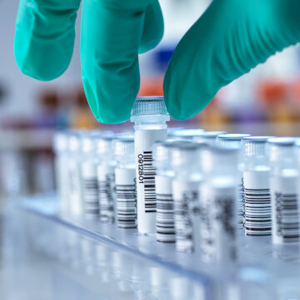
This method offers many advantages over other molecular diagnostic tools such as hybridization or PCR amplification. These advantages include the possibility of multiple detection, higher sensitivity and high specificity for indisputable results. It is easy to use and results can be interpreted visually. Because of its reliability and high sensitivity, it can advantageously replace the common and tedious methods used to highlight amplification results obtained by electrophoresis. Another advantage is that it avoids the use of ethidium bromide which is a mutagenic reagent.
An alternative to traditional methods
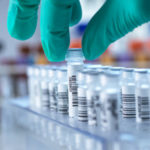
This method offers many advantages over other molecular diagnostic tools such as hybridization or PCR amplification. These advantages include the possibility of multiple detection, higher sensitivity and high specificity for indisputable results. It is easy to use and results can be interpreted visually. Because of its reliability and high sensitivity, it can advantageously replace the common and tedious methods used to highlight amplification results obtained by electrophoresis. Another advantage is that it avoids the use of ethidium bromide which is a mutagenic reagent.


